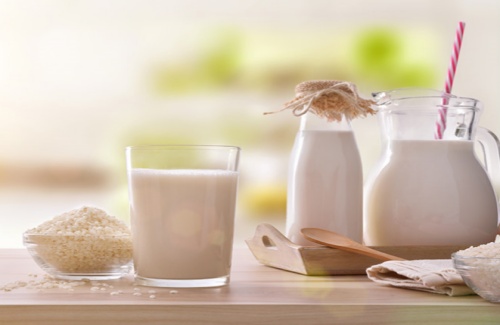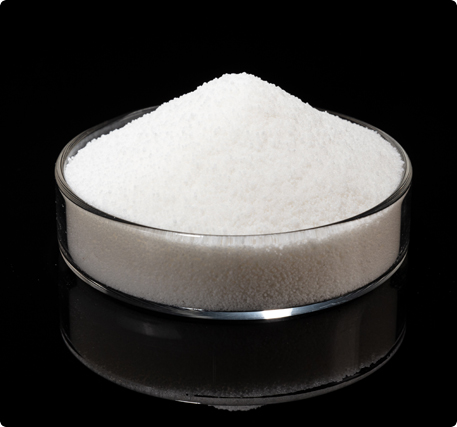While emulsifiers and stabilizers have distinct functions, they often work together synergistically in food formulations to achieve the desired texture, stability, and overall quality of the final product. Emulsifiers help create stable emulsions, while stabilizers ensure that these emulsions remain intact and maintain their consistency throughout storage and consumption. Together, they play crucial roles in ensuring the success of various food products in terms of appearance, texture, and consumer acceptance.This article extensively discusses emulsifiers and stabilizers in food, with a detailed focus on their respective roles in different applications. Specifically, it provides comprehensive descriptions of commonly used emulsifiers and stabilizers in ice cream and dairy products.
Why Use Emulsifiers and Stabilizers?
You might have heard the saying: oil and water don’t mix. When combined, oil floats on water, forming a separate layer—unless you add an emulsifier. Emulsifiers and their chemical relatives, stabilizers, are crucial for mixing protein shakes effortlessly, preventing ice cream from melting too quickly, and keeping cakes fluffy and moist.
Emulsifiers and stabilizers are widely used in food products to enhance taste, texture, appearance, and shelf-life. Selecting the right emulsifier and stabilizer for each application ensures optimal mouthfeel and stability. An incorrect choice can result in subpar products, lost sales, and the need for reformulation. Understanding how these ingredients work in specific food applications is key to achieving the desired product quality.
What Are Examples For Emulsifiers?
Emulsifiers are instrumental in achieving uniformity and stability in products where oil and water need to be mixed. These compounds reduce the interfacial tension between immiscible phases, allowing for the formation of stable emulsions. By facilitating the uniform dispersion of oil droplets in water or vice versa, emulsifiers ensure that products like mayonnaise, salad dressings, margarine, ice cream, and chocolate maintain their smooth, creamy texture and appearance over time. Commonly used emulsifiers include lecithin, mono- and diglycerides, polysorbates, sorbitan esters, and sodium stearoyl lactylate.
What Is An Example Of A Stabilizer?
Stabilizers, on the other hand, are substances that help maintain the uniformity and consistency of food items by preventing ingredients from separating or settling. They work by binding water molecules, thickening the mixture, or forming gels, thereby enhancing the texture and mouthfeel of the final product. Stabilizers are particularly crucial in products prone to phase separation or crystallization, such as dairy products, desserts, sauces, and beverages. Common stabilizers include agar-agar, carrageenan, guar gum, xanthan gum, pectin, and gelatin. These stabilizers are carefully selected based on their ability to provide the desired texture, viscosity, and stability to the food product.

What Are The Benefits Of Emulsifiers And Stabilizers?
1. Improved Texture: Emulsifiers and stabilizers can improve the texture of food products by creating a smooth, creamy texture in products like ice cream, and preventing the separation of oil and water in salad dressings and other products.
2. Enhanced Appearance: Emulsifiers and stabilizers can also help to enhance the appearance of food products by preventing the formation of ice crystals or the separation of ingredients.
3. Longer Shelf Life: Emulsifiers and stabilizers can help food products last longer by preventing spoilage and slowing down the growth of bacteria, which can extend the shelf life of products like dairy products and salad dressings.
4. Improved Mouthfeel: These additives contribute to a pleasant mouthfeel by preventing grittiness, iciness, or other undesirable textures in products like ice cream and dairy desserts.
What Is The Difference Between Emulsifier And Stabilizer In Ice Cream?
Ice cream is a delicious treat loved by many. However, making ice cream involves a complex process that requires the use of various ingredients to achieve the desired texture and taste. Two important ingredients in ice cream are emulsifiers and stabilizers, which are often added to improve the appearance, texture, and flavor of the ice cream.

Emulsifiers are substances that help to mix two or more liquids that normally do not mix, such as oil and water. In ice cream, emulsifiers help to blend the milk, cream, sugar, and other ingredients together, preventing them from separating. Common emulsifiers used in ice cream include lecithin, mono and diglycerides, and polysorbate 80. Adding emulsifiers to ice cream helps to create a smooth, creamy texture, and prevent ice crystals from forming, which can make the ice cream taste grainy or icy.
Stabilizers, on the other hand, help to maintain the structure of the ice cream, preventing it from melting too quickly or becoming too hard in the freezer. Stabilizers also help to improve the consistency and mouthfeel of the ice cream, giving it a desirable creamy texture. Common stabilizers used in ice cream include guar gum, carrageenan, and xanthan gum. By adding stabilizers to ice cream, manufacturers can ensure that the ice cream has a consistent texture and is easy to scoop, even after being stored in the freezer for a long time.
Both emulsifiers and stabilizers play an important role in creating high-quality ice cream. Emulsifiers help to mix the ingredients together, creating a smooth and creamy texture, while stabilizers help to maintain the shape and structure of the ice cream. Together, these ingredients help to create a delicious, enjoyable treat that people of all ages can enjoy.
What Are Emulsifiers And Stabilizers In Milk?
Emulsifiers in milk help to stabilize the natural emulsion of fat and water in milk, preventing separation and creating a uniform consistency. They achieve this by reducing the surface tension between the fat droplets and the surrounding liquid, allowing them to disperse evenly throughout the milk. Emulsifiers are particularly useful in processed dairy products like homogenized milk, flavored milk, and creamers to maintain a smooth texture and prevent creaming or fat separation.
Stabilizers in milk are additives that improve the texture, mouthfeel, and shelf-life of dairy products by preventing phase separation and maintaining consistency. They work by binding water molecules and thickening the milk, reducing the mobility of water molecules and preventing the settling of solids. Stabilizers are often added to dairy desserts, yogurts, and ice creams to enhance their creaminess, prevent syneresis (liquid separation), and inhibit ice crystal formation.

Some common emulsifiers and stabilizers that are used in milk and dairy products include carrageenan, xanthan gum, lecithin, and mono- and diglycerides. These substances are generally considered safe for consumption and are approved by food safety organizations like the FDA.
About Emulsifiers And Stabilizers Supplier And Manufacturer in China
Discover Chemsino, your premier supplier and manufacturer of emulsifiers and stabilizers in China. Our extensive range of high-quality food emulsifiers and stabilizer ingredients caters to diverse food production needs. Elevate your food formulations with confidence – partner with Chemsino today.











